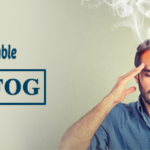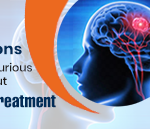The Complete Guide to Brain Stroke Treatment and Prevention

What is a Stroke and How does it Happen?
A stroke, sometimes called a brain attack, occurs when something blocks the blood supply to part of the brain or when a blood vessel in the brain bursts. Without oxygen, brain cells and tissue become damaged and begin to die within minutes. In either case, parts of the brain become damaged or die. Thus, brain stroke treatment is a must-have thing and it’s prevention you need to know. A stroke can cause lasting brain damage, long-term disability, or even death.
Some Causes Of Brain Stroke:-
-
High blood pressure – Your doctor may call it hypertension. It’s the biggest cause of strokes. If your blood pressure is typically 130/80 or higher, your doctor will discuss treatments with you.
- Tobacco – Smoking or chewing it raises your odds of a stroke. Nicotine makes your blood pressure go up. Cigarette smoke causes a fatty buildup in your main neck artery. It also thickens your blood and makes it more likely to clot. Even secondhand smoke can affect you.
- Heart disease – This condition includes defective heart valves as well as atrial fibrillation, or irregular heartbeat, which causes a quarter of all strokes among the very elderly. You can also have clogged arteries from fatty deposits.
- Diabetes – People who have it often have high blood pressure and are more likely to be overweight. Both raise the chance of a stroke. Diabetes damages your blood vessels, which makes a stroke more likely. If you have a stroke when your blood sugar levels are high, the injury to your brain is greater.
- Weight and exercise – Your chances of a stroke may go up if you’re overweight. You can lower your odds by working out every day. Take a brisk 30-minute walk, or do muscle-strengthening exercises like pushups and working with weights.
- Medications – Some medicines can raise your chances of stroke. For instance, blood-thinning drugs, which doctors suggest to prevent blood clots, can sometimes make a stroke more likely through bleeding. Studies have linked hormone therapy, used for menopause symptoms like hot flashes, with a higher risk of strokes. And low-dose estrogen in birth control pills may also make your odds go up.
- Age – Anyone could have a stroke, even babies in the womb. Generally, your chances go up as you get older. They double every decade after age 55.
- Gender – Women are slightly less likely to have a stroke than men of the same age. But women have strokes at a later age, which makes them less likely to recover and more likely to die as a result.
What are the Different Types of Strokes?
There are 5 Different Types of Strokes that stop or Interrupt the flow of blood to the brain:-
- Ischemic Stroke – An ischemic stroke happens when a blood vessel supplying blood to your brain gets blocked by a blood clot. Most strokes are of this type.
- Hemorrhagic Stroke – These happen when bleeding in your brain damages nearby cells. There are two types of hemorrhagic stroke. Which kind you have is based on where the bleeding happens. Subarachnoid haemorrhage means it happened in the area between your brain and skull. Intracerebral haemorrhage is bleeding inside the brain.
- Transient Ischemic Attack (Mini-Stroke) – Ischemic strokes also include something called a “mini-stroke” or a TIA (transient ischemic attack). This is a temporary blockage in blood flow to your brain. The symptoms usually last for just a few minutes or may go away in 24 hours.
- Brain Stem Stroke – This typically happens in your brain stem. It can affect both sides of the body. If this happens you’re left in a “locked-in” state where you’re unable to speak or move below the neck.
- Cryptogenic Stroke (stroke of unknown cause) – Cryptogenic stroke (CS) is defined as cerebral ischemia of obscure or unknown origin. The cause of CS remains undetermined because the event is transitory or reversible, investigations did not look for all possible causes, or some causes truly remain unknown. One-third of the ischemic strokes are cryptogenic.
Precautions should be taken during Brain Stroke- Let’s Get Started with Some Tips & Tricks!
Here are some useful precautions that you should follow to avoid Brain Strokes:-
- High blood pressure – is a huge factor, doubling or even quadrupling your stroke risk if it is not controlled. An ideal goal is maintaining blood pressure of less than 120/80. But there may be good reasons why you and your doctor will not want your readings to be this low. For some, a less aggressive goal (such as no higher than 140/90) may be more appropriate.
● Lose weight – Obesity and the complications linked to it (including high blood pressure and diabetes), raises your odds of having a stroke. If you’re overweight, losing as little as 10 pounds can have a real impact on your stroke risk.
● Exercise more – Exercise contributes to losing weight and lowering blood pressure, but it also stands on its own as an independent stroke reducer. Your goal has to do Exercise at a moderate intensity at least five days a week.
● If you drink — do it in moderation – Drinking a little alcohol, such as an average of one per day, is okay. Once you start drinking more than two drinks per day, your risk goes up very sharply.
● Treat atrial fibrillation – Atrial fibrillation is a form of irregular heartbeat that causes clots to form in the heart. Those clots can then travel to the brain, producing a stroke. Atrial fibrillation carries almost a fivefold risk of stroke and should be taken seriously.
● Treat diabetes – Having high blood sugar damages blood vessels over time, making clots more likely to form inside them.
● Quit smoking – Smoking accelerates clot formation in a couple of different ways. It thickens your blood and increases the amount of plaque buildup in the arteries. Along with a healthy diet and regular exercise, smoking cessation is one of the most powerful lifestyle changes that will help you reduce your stroke risk significantly.
What should be taken in a diet during a brain stroke?
Changing your diet for the better can help you heal and prevent stroke and heart disease in the future. Let’s see some diet plans:-
- Eat Whole, Mostly Plant-Based Foods and Lots of Veggies – Whole foods are those that are as close to their natural state as possible once they reach your plate. Fruit, vegetables, nuts, seeds, beans, rice, and fish are all good examples of whole foods. When choosing vegetables, opt for more leafy greens, asparagus, peppers, onions, carrots, brussels sprouts, and other non-starchy vegetables over potatoes and corn.
● Avoid Processed Foods, Salt, and Sugar – Processed foods are the opposite of whole foods. These foods typically come prepackaged and include options like cereal, crackers, certain bread, chips, and processed meats like luncheon meat and bacon. Processed foods typically contain a lot of sugar and salt, which may contribute to plaque buildup that can cause an ischemic stroke.
● Eat More Legumes – Legumes are a class of vegetables that includes beans, lentils, and peas. These are excellent sources of protein, vitamins, and minerals and are low in fat. legumes are typically low in fat and high in folate, potassium, iron, and magnesium. They are also cholesterol-free and high in fibre.
● Avoid Saturated Fat and Snack on Seeds and Nuts – a healthy diet should avoid saturated fats and limited amounts of fat in general when they do come into the diet, fats should be included in small amounts of nuts, olive oil, and canola if needed be.
The Importance of Preventing & Treating Strokes as Early As Possible
Too many people ignore the signs of stroke because they question whether their symptoms are real. Don’t wait if you have any unusual symptoms. Listen to your body and trust your instincts. If something is off, get professional help right away and if you are living in Jaipur, and want treatment for a brain stroke treatment, then you should concern with Dr Sumit Kamble.
Signs of a stroke include:
- Weakness on one side of the body
- Numbness of the face
- Unusual and severe headache
- Vision loss
- Numbness and tingling
- Unsteady walk.
Many strokes could be prevented through healthy lifestyle changes and working with your health care team to control health conditions that raise your risk for stroke. You can help prevent stroke by making healthy lifestyle choices.
Happy Healthy Living !!

 Previous Post
Previous Post Next Post
Next Post